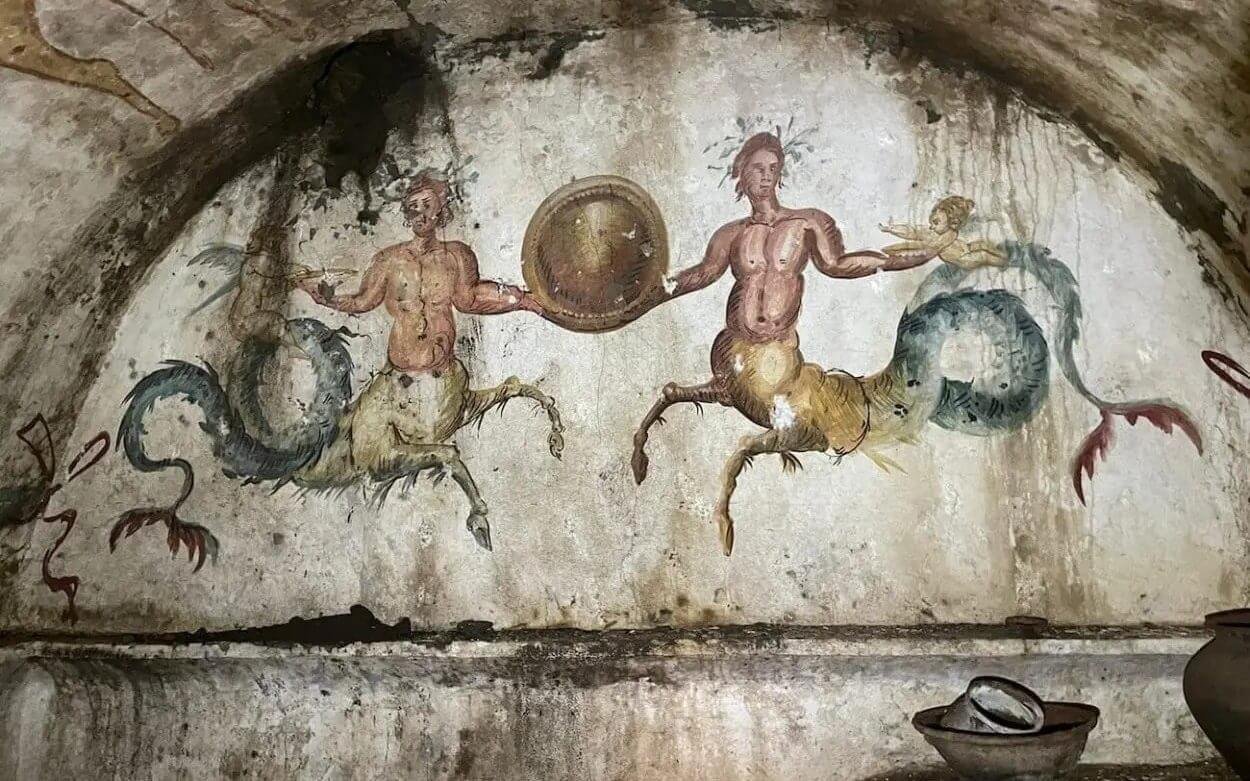In a remarkable archaeological discovery, a sealed 2,000-year-old tomb adorned with a stunning fresco of Cerberus, the three-headed dog from ancient Greek mythology, has been unearthed in Giugliano, a suburb of Naples, Italy. The tomb was discovered during an archaeological survey conducted prior to the commencement of maintenance work on the city's water system. This remarkable find sheds new light on Italy's rich historical tapestry.
The burial chamber, estimated to date back two millennia, joins a multitude of previously discovered burial sites in the same area, dating from the Roman Republic era (510–31 BC) to the Roman Imperial Age (31 BC–AD 476).
The recently discovered tomb boasts a series of remarkably preserved frescoes that adorn its walls and ceilings. The most captivating of these frescoes is that of the three-headed dog Cerberus, a mythical creature known to guard the gates of the underworld. Consequently, the burial chamber has been aptly named the 'Tomb of Cerberus.'
A painting of the mythical three-headed dog, Cerberus, adorns one wall of the chamber CREDIT: Ministry of Culture, Italy
The centerpiece of this captivating fresco depicts the twelfth and most perilous of Hercules' labors. In this mythical scene, Hercules, guided by Mercury, ventures into Hades to capture the formidable Cerberus.
The frescoes in this tomb also feature other intriguing mythological figures, including the ichthyocentaurs. These beings, a hybrid of a sea god and a centaur, possess a human's upper body, the tail of a fish, and forelegs resembling those of a horse.
Archaeologists stumbled upon the burial chamber when they identified a wall constructed using an ancient Roman construction technique known as "opus incertum." Gently removing the tiles that covered the ceiling opening, the archaeologists made an "unprecedented" discovery.
Mariano Nuzzo, the superintendent of archaeology, fine arts, and landscape for the Naples metropolitan area, described the find as follows: "The tomb has frescoed ceilings and walls in perfect condition, with mythological scenes that go all around the room and figurative representations among which a three-headed dog stands out."
Portraits of two ichthyocentaurs are also painted onto the wall CREDIT: Ministry of Culture, Italy
Nuzzo went on to explain the significance of the discovery, stating, "Three painted klìnai, an altar with vessels for libations, the deceased still placed on the funeral beds with rich objects—complete the picture of a discovery that, in this area, is unprecedented."
The ongoing excavation work aims to uncover more of the tomb's secrets without causing damage to its interior. Nuzzo expressed the emotional impact of this discovery, emphasizing the importance of preserving and protecting these vestiges of Italy's past.
"The emotion aroused by the privilege of such a discovery is indescribable," Nuzzo said. "The territory of Giugliano, after years of oblivion, is finally returning significant vestiges of its glorious past to be preserved and protected, thanks to a common effort."
This remarkable archaeological find not only enriches our understanding of ancient Roman culture but also provides a tantalizing glimpse into the world of myth and legend that has captivated humanity for centuries. The 'Tomb of Cerberus' serves as a testament to the enduring power of storytelling and the ability of ancient civilizations to immortalize their myths in art and architecture.









